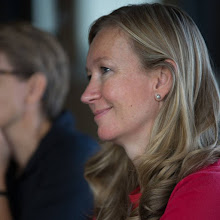Teaching Creative Writing Using Wikipedia
This morning I am teaching a class for our first year module: An Introduction to Writing Creatively.
We've been discussing how to write and publish material online, using Wikipedia as a case study.
The students have chosen a controversial topic, written their own version, have compared this with Wikipedia's version of the same topic and are now editing each other's work.
The topics they have chosen include: Sir Jimmy Savile, Same Sex Marriage in the UK, the Soham Murders, the Watergate Scandal, and Mormonism.
We're using this experience to generate a list of top issues that emerge when (1) Writing about controversy and (2) Editing each other's work. Here is a summary of the topics they raised:
Issues related to Writing about Controversy:
Tips for editing a non-fictional account of a controversial event:
We've been discussing how to write and publish material online, using Wikipedia as a case study.
The students have chosen a controversial topic, written their own version, have compared this with Wikipedia's version of the same topic and are now editing each other's work.
The topics they have chosen include: Sir Jimmy Savile, Same Sex Marriage in the UK, the Soham Murders, the Watergate Scandal, and Mormonism.
We're using this experience to generate a list of top issues that emerge when (1) Writing about controversy and (2) Editing each other's work. Here is a summary of the topics they raised:
Issues related to Writing about Controversy:
- How much can you rely on your reader's knowledge?
- It's hard to stay neutral because the cases are very big and well publicised. This influences your opinion.
- The reliability of 'experts' can be questionable.
- It is difficult not to give undue weight to particular aspects of a case (in terms of focus and sidelining other material)
- You need an explanation of key terms: jargon can exclude fair representation of a topic.
- Repetition can be difficult to avoid - and repetition can be dangerous because you can obscure details and repetition can be used as a rhetorical effect which sways audience response.
- The publication or use of controverisal material might have long term implications (e.g. what if Maxine Carr's child found they were studying the Wikipedia article for the Soham murder in class?)
- If you are quoting newspapers, how you contextualise these can vary in terms of how biased the citation might appear.
- It's difficult to provide enough information for your audience without overwhelming them with detail.
Tips for editing a non-fictional account of a controversial event:
- Don't overload the lead section with detail: include the key facts first.
- Be careful about how you structure giving information: think about how sections can be used to organise definitions and topics, and give focus to the subject matter.
- Make sure that the information is logical and chronological: that it does not jump around too much.
- Make sure that the opening sentence makes the topic clear from the outset.
- Use signposting judiciously to guide the reader


0 Comments:
Post a Comment
<< Home